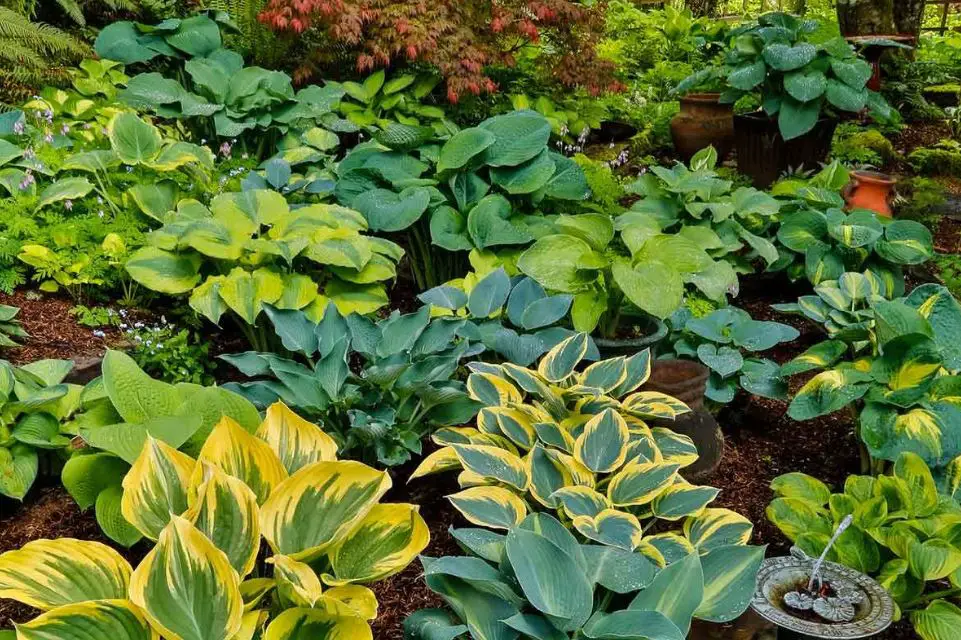Mostly all year round, there is a dry, sunny climate in the American southwest. Although freezing temperatures may sometimes occur, most of the time, the area is heated. Hostas are shady plants that demand rich, fertile soil in varying degrees of shade. They need a lot of water as well. In New Mexico, hostas may not get enough natural precipitation. Therefore they will require a weekly deep soak. Like other hostas, Colorado hostas need constant watering and shelter from the bitter cold.
Hostas have lovely foliage and little flower spires. They are available in various sizes, offering displays for gardens of all sizes. Hostas growing in the southwest should be chosen for drought and sun tolerance because of their cultural requirements. Plants will grow badly in open portions of the environment with little shade, and their magnificent leaves will probably be burned. Although the southwest is known for its hot weather, places like Colorado have brutally frigid winters. Site selection is the most important factor in cultivating a hosta in the southwest.

Do Hostas Grow in Arizona?
Arizona, New Mexico, and portions of Colorado, California, Nevada, Texas, Utah, and Oklahoma are included in the southwest. Desert-like regions and even genuine deserts are in this lower part of the United States. Temperatures often reach triple digits in places like Arizona, New Mexico, Nevada, and Texas, while nighttime lows may reach zero at certain periods of the year. For non-native plants, traversing such untamed expanses in a single day presents several difficulties. Even hostas, however, may be grown there. Hostas thrive in the early morning or late afternoon sunlight with some shade during the hottest day. Southwest soil may range in texture from silty to clay to loam. Before planting the hosta, the soil should be modified with well-rotted compost to provide more organic matter and porosity.
Site Selection for Hosta
Under conditions of direct sunlight, the big leaves of hostas may burn at the tips and edges. Nonetheless, they need sunlight to make blossoms and keep the color of their leaves. In conditions with complete shade, variegated hosta may deteriorate. The north or east side of the house is the ideal places. There will be early sunshine and midday shade for eastern flora. Hostas in the north will get afternoon sun. Do not put the hosta in a direction that faces south or west. Plants with blue foliage often need more shade, but those with variegated gold, white, or yellow leaves may withstand more light.
Hostas may grow in a container as well. Yet, unlike a hosta planted in the ground, potted plants’ soil dries up considerably more quickly. Although container-bound plants should be watered when the soil feels dry to the touch, in-ground hostas should be thoroughly watered once per week. Hostas planted in containers may be grown in regular potting soil, but adding a layer of mulch can help retain moisture.
Caring for Hosta in the Southwest
Hostas are very resilient plants with few insect or environmental issues. Animals that browse, however, like the vegetation. They should not be cultivated in areas where deer often go there. Except for slugs and snails, most other pests will overlook the plant.
Hostas typically need 1 inch (2.5 cm) of water each week. Yet, a hosta plant cultivated in Utah may have different water requirements than one planted in Arizona, particularly in the autumn and spring. The easiest way to tell when to water a garden is to feel the earth with your hands. Wilting leaves are another indicator. Yet, yellowing leaves may indicate that too much water is being used. Hostas seldom need fertilizer in excellent soil. Leaves will remain content with a springtime spray of diluted high-nitrogen fertilizer.

